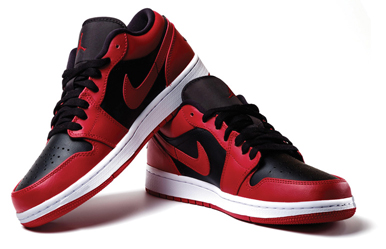
Once the youngest serving principal in Mississippi, Phelton Moss transformed an underperforming middle school from an F to a C in just two years. Now, the expert in leadership and policy is helping SOE students make the grade, preparing them to help build a more equitable and just public education system. Here, the Teach for America alumnus reflects on his experience walking the halls of Quitman County Middle School and what he learned about using footwear to engage Black boys’ minds and tap into their soles.
Q. Why should Black boys’ sneakers matter to educators?
A. After decades of reform initiatives like the No Child Left Behind Act, challenges persist for Black boys in their quest for academic freedom and success. Countless studies conclude that they are often dehumanized before they ever enter the classroom because of deeply entrenched stereotypes and biases.
One way to work toward restoring humanity for Black boys is to think outside the box when it comes to engagement tools. For many Black boys, sneakers are statements that define their personality and reflect their self-worth. When I was a middle school principal, one of our students, Jaylin, was walking extremely slowly in the hall and taking pains to stay out of the way of others. I said, “Jaylin, why are you walking like that? Shouldn’t you be in class already? You are wasting time.”
He responded, “Umm, I’m trying to make sure my Forces don’t get a crease in them.”
I believe in the power of building relationships with students to get them to do the math problem that they otherwise wouldn’t have tried or read a book that once felt out of reach. But in that moment, I did not make the effort to understand why Jaylin coveted his Nike Air Force 1s so much. Instead, I fussed at him because he was taking his time getting to class.
Q. How are sneakers an expression of selfhood?
A. Sneakerhead culture is nothing new. We could trace Jaylin’s Forces back through a history of Black cultural expression—from sneakers as a fashion statement and status symbol in the 1980s to signature sneakers worn by basketball players, including teams at historically Black colleges, and Black icons in rap and hip-hop.
When I took the time to understand the importance of Jaylin’s shoes, I realized they were the one thing he could take pride in: His Forces represented owning something that reflected his personality. Although I missed an opportunity to build a relationship with Jaylin in that moment, I now find myself ensuring—like him—that I protect my Nike Dunk Lows.
In a world that perpetuates a monolithic view of Black men and boys, sneakers give Black students an opportunity to reject reductive thinking by showcasing their individuality and building a sense of community.
Q. How can teachers use sneakers as a tool for engagement and learning?
A. We could ask Jaylin to use a geometric toolbox to sort out the measurements of design patterns in his shoes, for example, or encourage him to analyze how Jordans have impacted the American economy during the recession.
These ideas and many more like them are contingent upon educators viewing their teaching as crucial to preserving, protecting, and centering Black boys’ humanity. As teachers continue to pursue education justice, they should ask boys like Jaylin about their sneakers. They may discover their next engagement tool in the response—and that may be the one conversation that changes their relationship with students like Jaylin.